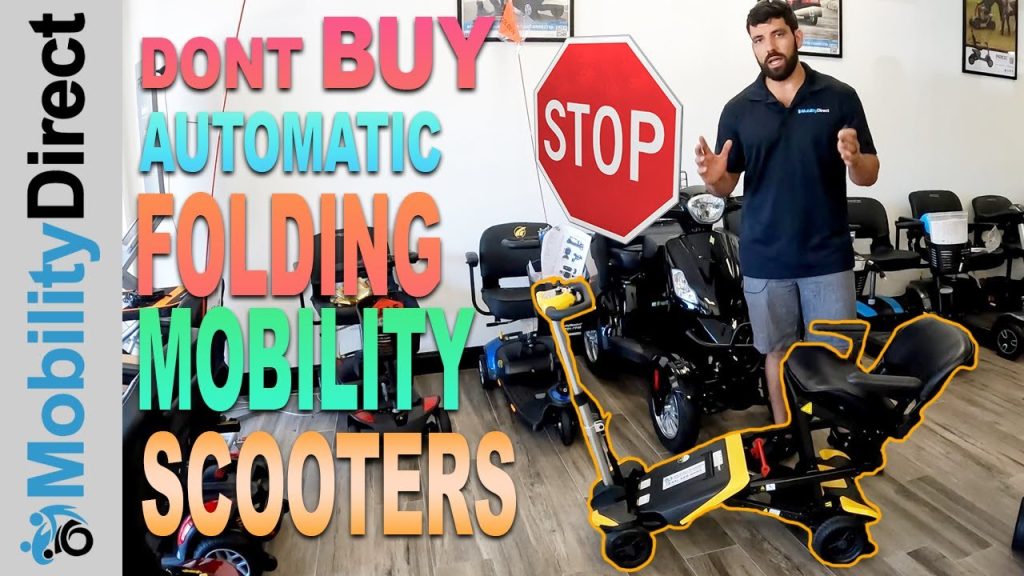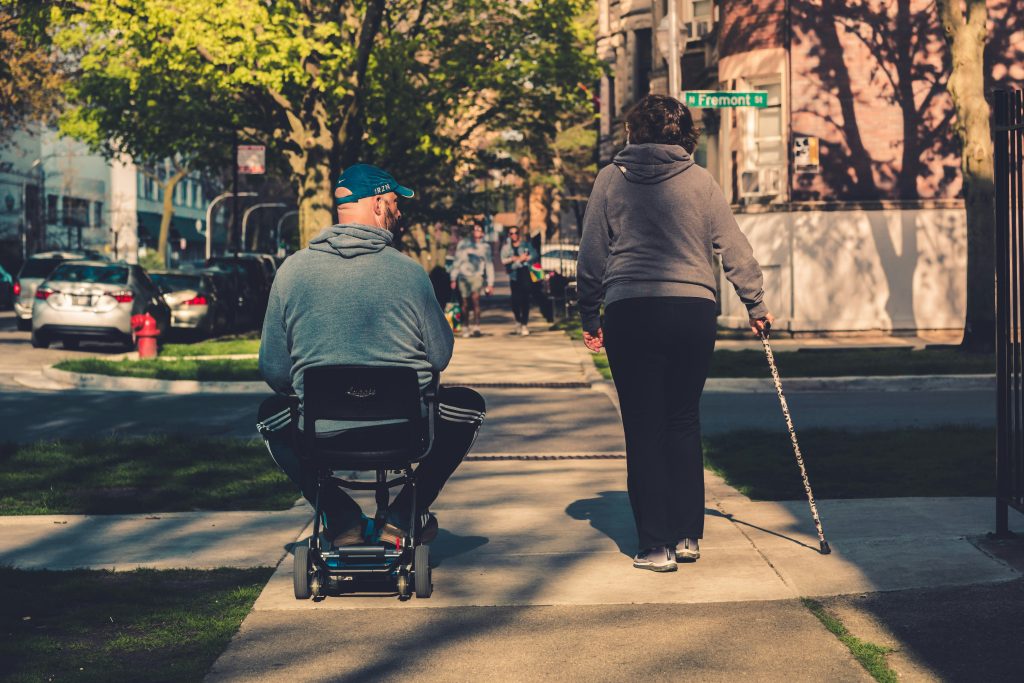Before you buy an automatic folding mobility scooter, watch this video so you know what to expect and can avoid expensive surprises. You’ll learn why technicians find auto-fold models fragile, which repairs are costly and time-consuming, and how airline handling can increase the risk of damage.
The article outlines action shots, a pros-and-cons review, model-specific evaluations (Transport 4 AF, Transformer 2, S19AF+), and a recommendation for manual folding scooters as a simpler, more reliable option. It also explains ordering details, the monthly giveaway, and how to contact the seller if you want more information.
Why You Must Watch This Video Before Buying an Auto-Fold Scooter
Summary of the Mobility Scooters Direct video and its main warnings
You’ll get a clear, no-nonsense warning in the Mobility Scooters Direct video: automatic folding mobility scooters look appealing, but they come with important downsides that you should know before you buy. The video demonstrates models like the Transformer 2 and the Transport Auto-Fold family, and it highlights that these scooters are often delicate, expensive to repair, and have many mechanical “breaking points.” The main cautions are straightforward: don’t assume automatic folding equals better overall portability, be aware of repair frequency and cost, and understand that airline and freight handling can easily damage these mechanisms.
Claims from technicians about frequency of repairs and common failure points
Technicians in the video and referenced by the seller consistently report that automatic folding scooters are among the most commonly repaired units they see. They point to repeated failures in folding mechanisms, motors, gears, wiring, and latches — all parts that experience stress every time the scooter folds and unfolds. You should take those claims seriously because technicians base them on repair logs and patterns across multiple units, so the higher frequency of repairs is not just anecdotal.
Why an hour or two invested in watching the video can save money and hassle
Spending an hour or two to watch this video before you buy can prevent you from making a costly mistake. You’ll learn where the weak points are, what to test during a demo, and which alternatives might meet your needs with fewer headaches. That small time investment can save you money on repairs, avoid downtime when the scooter is unusable, and give you realistic expectations about weight, handling, and travelability.
Who will benefit most from watching (travelers, frequent flyers, people seeking convenience)
If you travel frequently, fly with your device, or rely on a single-person folding solution, this video is especially relevant. Travelers and frequent flyers face a greater chance of rough handling by airline staff, while people who prioritize convenience may be tempted by auto-fold features without realizing the trade-offs. Even if you don’t travel, anyone seeking a low-maintenance, reliable mobility solution should watch to compare automatic folding models with simpler manual alternatives.
What Is an Automatic Folding Mobility Scooter (Auto-Fold)
Definition and basic operating principle of auto-fold scooters
An automatic folding mobility scooter, or auto-fold scooter, is a powered mobility device that folds or unfolds at the push of a button or via a remote control. The basic principle is mechanized folding: electric actuators or small motors drive hinges and linkages to collapse the scooter into a more compact form for storage or transport, and the same or similar subsystems re-extend the frame when you’re ready to ride.
How the automatic folding mechanism differs from manual folding or disassembly
Unlike manual folding or disassembly, where you physically lift, fold, or remove parts, auto-fold systems contain motors, gearboxes, wiring, sensors, and control modules to automate the movement. Manual systems rely on simple latches and user force, which are lower-tech and easier to inspect and repair. Auto-fold systems add complexity to make the process hands-free but introduce moving parts that can fail and electronics that can malfunction.
Intended advantages manufacturers advertise (convenience, portability)
Manufacturers advertise auto-fold scooters for their convenience: you don’t need to lift heavy parts or ask for help to collapse the scooter, and many models claim easy transport and compact storage with a single button press. Portability, modern tech appeal, and faster setup times are common selling points that attract users who want independence and speed when boarding vehicles, navigating tight spaces, or storing the scooter in a trunk or closet.
Common materials and construction approaches used in these scooters
Auto-fold scooters typically use lightweight metals like aluminum or steel alloys for frames, plastic housings for electronics and trim, and composite or rubber components for wheels and handles. Folding mechanisms combine stamped or machined brackets, pins, hinge assemblies, electric actuators, and gearboxes. Batteries are usually sealed lead-acid or lithium-ion, and the control systems use modest microcontrollers and wiring harnesses to coordinate folding actions.

Common Models and Brands Mentioned in the Video
Transformer 2: features, advertised benefits, and the video’s observations
The Transformer 2 is presented as a popular auto-fold option that promises easy automatic folding and modern styling. Advertised benefits include full automatic fold/unfold, compact size when folded, and straightforward remote control operation. The video’s observations emphasize that while the Transformer 2 looks convenient, it still carries the same delicate components and repair-prone parts that characterize auto-fold scooters, and that you should be wary of relying on its folding system under frequent travel or harsh handling.
Transport Auto-Fold 4 Wheel and Transport Auto-Fold Plus: what’s similar and different
The Transport Auto-Fold 4 Wheel and Transport Auto-Fold Plus are variations targeting slightly different user priorities: the 4 Wheel aims for added stability and a familiar scooter footprint, while the Plus may offer incremental upgrades in comfort or materials. Both share the automatic folding mechanisms that can be sensitive to misalignment, impact, and repeated stress. The video highlights that model differences often relate to cosmetics, seat comfort, and small spec changes, but the core folding vulnerabilities remain similar across the Transport line.
EV Rider Transport Auto-Fold references and known specs
The EV Rider Transport Auto-Fold models are often referenced as representative of the auto-fold category. Known specs typically include fold-unfold motors, lithium battery options, and a focus on portability and travelability. The video, however, notes that even well-specified models like EV Rider’s can suffer from the same hinge, motor, and wiring stress points that cause frequent repairs, so brand reputation doesn’t eliminate the mechanical realities of auto-fold designs.
How these specific models illustrate broader category issues
Together, the Transformer 2, Transport Auto-Fold variants, and EV Rider examples illustrate that regardless of brand, the automatic folding approach introduces shared vulnerabilities: complexity, delicate linkages, and electronics that can be damaged by routine travel or rough handling. The models serve as case studies showing that some pros come with proportional cons — and that many issues are systemic rather than model-specific.
Pros of Automatic Folding Scooters
Convenience of push-button or remote folding
The most obvious pro is convenience: you can fold or unfold the scooter with minimal effort, often from a short distance using a remote. That feature helps if you have limited upper-body strength or need to perform the action by yourself without lifting heavy parts.
Potential for easier storage and vehicle loading when working properly
When the folding mechanism works as intended, you can store the scooter in tighter spaces and sometimes fit it into small car trunks without bulky disassembly. That ease of loading—if reliable—can be a real time-saver for regular day trips and short travel.
Tech appeal and perceived modern design benefits
Auto-fold scooters have a “wow” factor and a modern appeal that many users like. If you enjoy tech-forward solutions and appreciate the novelty of automated systems that simplify daily routines, these scooters can feel empowering and contemporary.
Situations where automatic folding may genuinely help (single-person loading with limited mobility)
Auto-folding is genuinely helpful if you must fold and move a scooter alone—especially if lifting is difficult or impossible. For a single person with limited mobility who needs to stow their scooter frequently, a reliable auto-fold mechanism can provide independence that manual systems might not.

Cons and Hidden Drawbacks of Auto-Fold Scooters
Higher upfront cost compared to manual folding models
Auto-fold scooters usually cost more than manual folding scooters because of the additional motors, gearboxes, electronics, and engineering required. You’ll pay a premium for convenience, and that cost can compound if repair frequency is high.
Greater mechanical complexity leading to more potential failure points
More components equals more things that can break. Motors, gears, sensors, and electrical connectors all add potential failure points that are absent in simpler manual designs. That complexity increases the likelihood of out-of-service time and repair needs.
Weight issues — many auto-fold scooters are heavy despite folding capability
Because of the added hardware, auto-fold models can be surprisingly heavy. That weight undermines some of the portability advantages you expect from a folding scooter, and it can make manual lifting or carrying—which may still be required in some situations—more difficult.
Higher repair costs and longer repair times reported by technicians
Technicians report that repairs on auto-fold systems are often more expensive and labor-intensive than standard scooter repairs. Replacing a folding motor or gearbox, realigning hinges, or troubleshooting control modules takes time and specialized parts, all of which raise repair bills and extend downtime.
Vulnerability to rough handling by airline staff or freight handlers
Airline and freight handlers may not be aware of the delicate nature of automatic folding systems, and they can accidentally damage hinge points or electronics when loading and unloading. This vulnerability makes travel riskier and can shift responsibility and cost disputes to you, the owner.
Specific Mechanical and Electronic Failure Points
Folding hinge mechanisms and latches that can wear or jam
Hinges and latches bear significant mechanical loads and are subject to wear, corrosion, and misalignment. Over time, pins can loosen, bearings can fail, and latches can jam, preventing proper folding or secure unfolding.
Dedicated folding motors and gearboxes that can burn out or fail
The small motors and gearboxes that drive folding are subject to mechanical wear, gear stripping, and electrical burnout. These parts are crucial to automated operation; if they fail, the scooter may not fold or unfold without professional repair.
Wiring harnesses and connectors that are stressed by repeated folding
Wires routed through folding joints experience flexing and possible chafing every cycle. Connectors can loosen under vibration, and harness insulation can wear through, causing intermittent faults or outright failures in the folding circuit.
Control modules, sensors, and software faults affecting folding reliability
Auto-fold scooters use control modules and sensors to detect positions and manage motor motion. Faulty sensors, damaged control boards, or software glitches can leave the scooter stuck in one state or cause unsafe folding behavior. Diagnosing these issues often requires dealer-level tools and technical know-how.
Battery and electrical supply issues that prevent folding operation
If the battery is discharged, weak, or improperly connected, the folding motors won’t have enough power to operate. Battery aging, poor connections, or BMS (battery management system) issues can therefore render the auto-fold function unusable, even if the scooter otherwise runs.

Repair Frequency, Time, and Cost Considerations
Typical repairs technicians report for auto-fold scooters and frequency compared to other scooters
Technicians report frequent repairs involving folding motors, hinge realignments, control module failures, and wiring repairs. Compared with manual scooters, these failures occur more often because of the repetitive stress on complex parts. The video makes it clear that auto-fold models show up in repair shops disproportionately.
Average parts cost and labor intensity for common failures
Parts like folding motors and gearboxes can be relatively expensive, and labor is often intensive because the repairs require disassembly and precise reassembly. Expect higher parts costs and more billable hours than for simpler components like tires or seats.
Turnaround times for repair and downtime impact on users
Turnaround times can range from a few days for simple fixes to several weeks for replacement parts that must be ordered from manufacturers or distributors. That downtime can seriously impact users who rely on their scooter daily, potentially forcing them to arrange temporary alternatives.
Availability and lead time for replacement parts from manufacturers or dealers
Parts availability varies by brand and model; some manufacturers maintain decent inventories, while others have long lead times. If your model is niche or discontinued, you may face longer waits for parts or the need to source second-hand or aftermarket components.
Real-World Durability and Handling Factors
How everyday use exposes weaknesses (curbs, bumps, uneven sidewalks)
Everyday hazards like curbs, potholes, and uneven sidewalks put repeated stress on hinges, frames, and suspension. Auto-fold components designed for smooth, controlled motion are often less tolerant of impacts and can misalign or break when the scooter is pushed beyond designed operating conditions.
Case examples: damage during airline transport or taxi/ride-share handling
The video and technician reports include examples where gate staff or handlers incorrectly stowed or tossed a folded scooter, causing bent hinges, cracked housings, and snapped wiring. Taxi and ride-share drivers who aren’t trained to handle delicate mobility gear may also load scooters in ways that stress folding points.
Effects of environmental exposure (moisture, salt, dust) on folding systems
Exposure to moisture, salt (from coastal areas or winter roads), and dust accelerates corrosion and wear on hinge pins, motors, and connectors. Seals and protective covers are not always robust, so environmental exposure can cause premature failure of folding mechanisms and electrical systems.
How heavy weight and center of gravity changes affect stability when folded/unfolded
Because auto-fold scooters are often heavier, their center of gravity changes when folded or in transition, which can make them awkward to position or roll by hand. That weight also affects vehicle loading and may make the scooter less stable during transfers if a hinge or latch fails.

Airline and Travel Considerations
Airline policies and FAA rules around lithium batteries and mobility devices
You should know that airlines and the FAA have strict rules about lithium batteries. Many airlines require batteries to be installed in the device and protect terminals, or to be carried in the cabin if removable. You’ll need to declare your battery and check airline-specific policies in advance to avoid last-minute issues.
How airline handlers often mishandle delicate folding mechanisms
Airline handlers may not be trained to recognize or protect delicate folding mechanisms. Gate-checking a scooter or sending it in cargo often means the device is lifted, stacked, and mechanically handled in ways that can bend hinges or fracture housings. You should assume less-than-gentle handling unless you’ve arranged special accommodations.
Risks of damage during gate-check or cargo transport and who is responsible
Damage during gate-check or cargo transport is common, and responsibility can be hard to assign. Airlines may disclaim liability for certain devices, or claims might be complicated by documentation or the nature of the damage. You should document the condition of your scooter before travel and understand your airline’s liability rules.
Packing, documentation, and pre-flight checks to reduce travel risk
To reduce travel risk, you should document the scooter’s condition with photos, secure loose parts, remove or properly secure batteries as per airline policies, and label the scooter with contact and handling instructions. Performing a pre-flight function test and carrying user manuals or service records can help if damage disputes arise.
Conclusion
Clear summary recommendation based on technician reports and video warnings
Based on technician reports and the Mobility Scooters Direct video, you should be cautious about buying an automatic folding scooter. They promise convenience but bring mechanical complexity, higher repair frequency, increased weight, and travel vulnerabilities that often outweigh the benefits for many users. If you value simplicity, reliability, and low maintenance, a manual folding scooter is often the safer choice.
Final checklist: watch the video, test in person, prioritize simplicity and serviceability
Before you buy, follow this checklist: watch the video in full, test any model in person with a dealer-supplied demo, inspect hinge and electrical points, ask about spare parts and service turnaround, and prioritize models that emphasize simplicity and ease of repair. Make sure you can get hands-on demos and confirm local repair support.
Suggested immediate alternatives to consider before buying an auto-fold scooter
Consider manual folding scooters, modular disassembly models, or lighter non-automatic fold designs that separate into easily manageable pieces. These often cost less, are simpler to repair, and are more tolerant of travel and rough handling. If you need automated help, look for models with proven reliability records and robust warranties.
Call to action: watch the Mobility Scooters Direct video, contact trusted dealers, and ask for hands-on demos
Do yourself a favor: watch the Mobility Scooters Direct video before making a purchase, contact reputable dealers to ask tough questions about parts and repairs, and insist on hands-on demos so you can test folding cycles and inspect components. That extra diligence will help you choose a mobility solution that fits your lifestyle without unexpected expense and hassle.
SUBSCRIBE FOR A CHANCE TO WIN A FREE MOBILITY SCOOTER! WE GIVE AWAY A SCOOTER TO ONE LUCKY SUBSCRIBER ONCE PER MONTH!
If you have considered a Transformer Auto-Folding mobility scooter, please watch this video first. While it may seem like an awesome scooter because of its ability to automatically fold, there are many things that you should know about prior to purchasing it. In fact, if you have considered any auto fold scooter, please watch this video before making the purchase. Most auto-folding scooters are expensive, and very delicate. Our technicians all agree that the automatic folding scooters are the most common scooters that they have to do repairs for. This is due to the fact that they have many “breaking-points” and delicate components. If you travel via air plane, the chances are that the air line handlers will not know how to carefully handle an automatic folding scooter which often leads to damage. It’s also worthy to note that repairs on auto-folding scooters are the most expensive and labor-intensive repairs. Simply put, we don’t recommend automatic folding scooters, they are heavy, and too much trouble compared to a regular manual folding scooter.
Transformer 2 Auto Folding Scooter –
Videos of the Transformer 2 Scooter: • Video
Transport Auto Fold 4 Wheel –
Videos of the Transport Auto Fold 4 Wheel: • EV Rider Transport Auto-Fold Scooter (S19A…
Transport Auto Fold Plus –
Videos of the Transport Auto Fold Plus: • Transport S19AF+ Folding Mobility Scooter …
We offer this product and all other powered mobility products with free shipping and we don’t charge sales tax (restrictions apply). (888) 263-5601
To view our complete selection of folding mobility scooters, visit our website with the link below:
Video Chapters:
You may also request a FREE CATALOG via USPS by filling out the form on our website which is linked below:
If you’re on the market for a mobility product, please consider our company (888) 263-5601. We have been in business since 2014 and we the best customer service in the industry. Feel free to check out our reviews and customer testimonials which we proudly display on our website and they can also be seen across various platforms like Google and Facebook.
Thank you for watching this video, don’t forget to subscribe or to leave a comment if you have any questions about our products. You can also call us toll-free to speak with a sales expert any time at 888-263-5601
Our Facebook: / mobilityscootersdirect
Our Google Business Listing:
Join this channel to get access to perks:
/ @mobilitydirect
Video Chapters:



